CPI Moves Higher But Does the Bank of Canada Care?
October 24, 2011The ECB Favours a Scalpel But If It Dithers For Too Long, The Market Will Intervene With A Chainsaw
October 31, 2011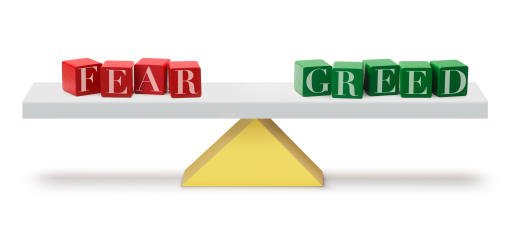 Like stock markets, economies are really only governed by two competing forces: fear and greed.
Like stock markets, economies are really only governed by two competing forces: fear and greed.
When greed dominates, money flows into riskier investments that promise the highest potential returns, businesses worry about how to grow as fast as their balance sheets will let them, and because consumers feel secure about their prospects for continued employment, they spend.
If greed overstays its welcome (as it usually does), investors are forced to take on increasingly more risk to achieve the same returns, businesses must absorb higher costs as resources become scarcer, and as prices increase and consumers can no longer buy what they want with their earnings, they borrow.
Greed’s rotting underbelly grows until eventually, fear takes over. Investments that can’t possibly live up to ever-higher expectations, don’t, and shareholders start running for the exits; businesses cancel expansion plans and look for ways to cut costs, especially expensive ones, like labour; and consumers revert back to basics and, to prepare for the worst, they save.
Fear cleans out the excesses that greed created, but the curative process is a painful one. If greed is the life of a party that eventually gets out of hand, fear is the hangover that makes a generation of borrowers think twice about ever hooking up with greed again.
In today’s post, my latest Quarterly Mortgage-Market Update, I’ll explain why fear hangs over many of the world’s economies today and I’ll explain why this same fear is what’s keeping Canadian mortgage rates at record-low levels. Then, as usual, I’ll wrap up by giving you my best guess as to where both fixed and variable rates may be headed.
No region is exporting more fear these days than the euro zone, where the experiment to see what happens when you centralize monetary policy without also centralizing fiscal policy is slowly and painfully inching towards its inevitable conclusion (here is a past Monday Update that explains what I mean when I say that).
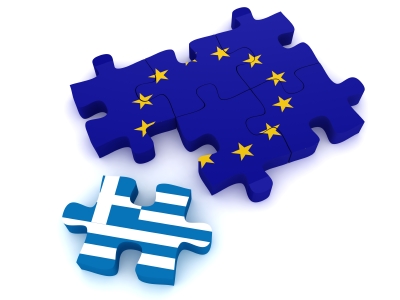 First, Greece had to default one way or another, and this morning’s announcement of a 50% write down of Greek debt was really just default by another name. Greece simply could not pay the interest, let alone the principal, on its crushing levels of debt with a stagnant economy and a population that riots when the austerity measures demanded by the rest of the euro zone are tabled by their government. For a country whose debt was projected to reach 175% of its gross domestic product (GDP) by 2012, the only real question was whether it will be the euro-zone leadership or bond-market investors who would trigger the official default.
First, Greece had to default one way or another, and this morning’s announcement of a 50% write down of Greek debt was really just default by another name. Greece simply could not pay the interest, let alone the principal, on its crushing levels of debt with a stagnant economy and a population that riots when the austerity measures demanded by the rest of the euro zone are tabled by their government. For a country whose debt was projected to reach 175% of its gross domestic product (GDP) by 2012, the only real question was whether it will be the euro-zone leadership or bond-market investors who would trigger the official default.
The world needs a carefully managed Greek default because 75% of Greece’s 350 billion euros in government debt outstanding is foreign owned, primarily by European banks in Portugal, Ireland, Spain and Italy. Each of these four countries is already struggling under the weight of their own crises and they are ill-equipped to provide the massive domestic bank bailouts that would be required if Greece’s default was mismanaged. This is why we have been hearing the word “contagion” so much lately (and by the way, in case you were wondering, Germany and France have the highest exposure to Italy and Spain so you can see where the end game could lead).
While euro-zone banks will suffer the most immediate impact from a Greek default, weak euro-zone countries will also bear the brunt. Now that the price of Greece’s sovereign default is known, and after the euphoria of having avoided an even worse outcome wears off, investors will demand higher yields on government debt from the other struggling countries. That exacerbates an existing problem because many of these countries already have large budget deficits, and higher borrowing costs would make those budget shortfalls larger still. The more offside government spending gets, the higher yields will go, creating a self-perpetuating cycle that is difficult to reverse, as fear begets more fear.
So how ready to withstand this 50% write down on Greek debt are its biggest creditor countries today? Many experts believe that the self-perpetuating market fear described above will kick in when euro-zone governments have to pay more than 6% on their ten-year debt. Consider that earlier this week Italy and Spain, who are widely considered too big to bail out, had ten-year yields at 5.95% and 5.55% respectively, and that these yields would have been even higher if the European Central Bank (ECB) hadn’t been aggressively buying up Spanish and Italian bonds. Will the ECB still be an aggressive buyer when, for example, Italy has to roll over 400 billion euros of its debt in 2012?
The ultimate success or failure of the euro zone crisis still hinges on the European Financial Stability Facility (EFSF) fund, which is sponsored by the seventeen euro-zone countries, but is primarily underwritten by Germany and France. The EFSF can buy debt from weaker  euro-zone countries, recapitalize impaired banks, or issue debt backed by the German Debt Management Office. That might (or might not) make for good pan-euro-zone policy, but it certainly isn’t popular with German voters – and that’s using today’s projected costs, which many estimate will be a mere fraction of the real costs by the time this crisis is finally on the wane.
euro-zone countries, recapitalize impaired banks, or issue debt backed by the German Debt Management Office. That might (or might not) make for good pan-euro-zone policy, but it certainly isn’t popular with German voters – and that’s using today’s projected costs, which many estimate will be a mere fraction of the real costs by the time this crisis is finally on the wane.
The task of clearly defining the role and commitment of EFSF with so many competing stakeholders has been difficult, and the markets are growing increasingly impatient for more detail. The specifics on exactly how the ongoing cost of the fund will be shared between the participating countries are still murky at best. Investors can smell fear in the air and short sellers, who make money betting on bad outcomes, have been circling since the crisis began. To keep them guessing, the euro-zone leadership has taken to calling meetings, making announcements about more meetings, and leaking hints of what may come. So far, this game of cat and mouse has created just enough doubt about some new magic cure-all plan to keep the speculators from pushing the vulnerable euro-zone countries over the cliff. But for all their talk, German Chancellor Angela Markel and French President Nicholas Sarkozy haven’t yet figured out how to save the euro zone once-and-for-all without committing domestic political suicide in the process.
When the dust finally settles, the euro zone will begin its long road to recovery. Normally this would include taking advantage of a weakened currency by increasing exports to foreign markets, like the U.S., which is by far the euro zone’s largest export partner. But U.S. consumers, who account for about 70% of total U.S. economic activity, have fear on their minds as well.
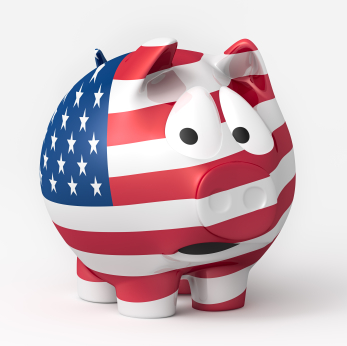 And who would blame them? The U.S. federal government almost drove the U.S. economy into a brick wall during this summer’s debt-ceiling talks and since then, the country’s budget deficit has continued to grow. I saw a striking summary recently that divided all the key numbers in the U.S. federal budget by $100 million to make them look more like a typical family budget. In the example, Uncle Sam made $21,700 and spent $38,200 each year. To make up the difference, he added the $16,500 shortfall to his family’s existing credit-card balance of $142,710, and then in recognition of the problem, Sam’s family sharpened their pencils and agreed to cut their annual spending by $385. No wonder Uncle Sam’s credit rating was downgraded!
And who would blame them? The U.S. federal government almost drove the U.S. economy into a brick wall during this summer’s debt-ceiling talks and since then, the country’s budget deficit has continued to grow. I saw a striking summary recently that divided all the key numbers in the U.S. federal budget by $100 million to make them look more like a typical family budget. In the example, Uncle Sam made $21,700 and spent $38,200 each year. To make up the difference, he added the $16,500 shortfall to his family’s existing credit-card balance of $142,710, and then in recognition of the problem, Sam’s family sharpened their pencils and agreed to cut their annual spending by $385. No wonder Uncle Sam’s credit rating was downgraded!
The U.S federal government and the Federal Reserve used up most of their ammunition fighting the last recession, with little apparent effect, and it can ill afford another broadside if the euro zone blows up (which despite today’s announcement on Greece could still happen). David Rosenberg aptly summarized the U.S. vulnerability to the euro-zone crises when he noted, “It is not hard for a car stuck in neutral to shift into reverse if it meets a hill.”
Regular readers of my quarterly updates might remember that China was Canada’s ace in the hole during the last recession because its voracious demand for commodities pushed world prices higher and helped countries like Canada soften the blow from the U.S. slowdown. Well, that surge in Chinese demand was driven by huge stimulus programs that were implemented when China had very low inflation (seen here), and with Chinese inflation now rising above 6%, it is far less likely that similar-sized stimulus programs will be in the offing if the U.S. economy shifts into reverse again.
But fear not (or at least less) fellow Canuck, because against this backdrop of extraordinary global economic uncertainty, Canada’s domestic picture is somewhat more encouraging. Our recent economic growth is being led by capital spending as Canadian businesses invest in improved productivity. This will produce long-term dividends for our economy, and gives us more sustainable momentum than growth led by government expansion, or consumer spending and housing investment fuelled by accelerated borrowing.
Speaking of borrowing, while much has been made of the Canadian statistics showing that average consumer debt has reached record levels, we have actually been trimming our collective sails lately. Our average household debt is now expanding at about half of the rate we were seeing in 2007, and our current 4% savings rate is slightly above our ten-year average. Those are trends in the right direction.
Whatever happens next, we are one of the few countries that still has some dry powder to fight off another downturn: our federal government is operating under very manageable debt and deficit levels, the Bank of Canada (BoC) has invoked only minor quantitative easing thus far, o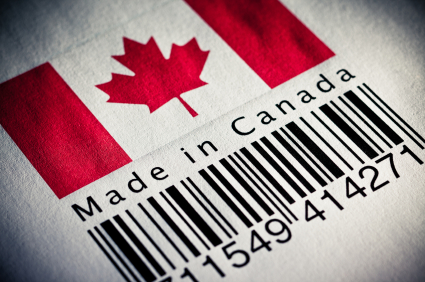 ur unemployment rate is stable, and the gap between our economy’s actual output and its total potential output is shrinking. When you combine these factors with our rock-solid banking system which is widely viewed as the best regulated in the world, the Great White North’s prospects look a lot less scary on a relative basis.
ur unemployment rate is stable, and the gap between our economy’s actual output and its total potential output is shrinking. When you combine these factors with our rock-solid banking system which is widely viewed as the best regulated in the world, the Great White North’s prospects look a lot less scary on a relative basis.
The silver lining in all this gloom and doom has been the good news for Canadian mortgage holders. Canada’s position as an island of relative stability has dovetailed perfectly with rising investor demand for ultra-low-risk assets (which are harder to come by now that many countries have lost, or are in danger of losing, their AAA credit ratings). While fear may be slowing the rate of the global economic recovery, it is also pushing Government of Canada bond yields, and by association Canadian mortgage rates, to record low levels.
I think fixed rates…
are more tempting than they have been in a long time.
If I were re-negotiating my mortgage today, I would think long and hard about paying the current .5% premium to lock in my rate and forget about it. Even if you end up paying a little more in the end, going with a fixed rate at 3.19% is a low-risk call. One eventual outcome of all this uncertainty could be rapidly rising inflation, and a fixed rate buys you some protection.
I think variable rates…
looked a lot more compelling when lenders were discounting more aggressively.
Once lenders figured out that variable rates were going to stay low for the foreseeable future, they had to start cutting their discounts to keep their bread-and-butter fixed-rate borrowers from breaking their mortgages en masse and switching to variable.
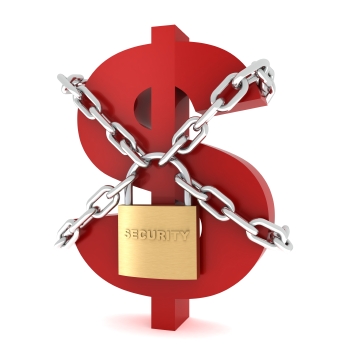 It’s not a coincidence that the Big Five cut their short-term fixed rates at the same time they started shrinking their variable-rate discounts in lockstep. Most fixed-rate borrowers discharge their mortgages with less than half of the time remaining on their term and when the Big Five lowered their short-term fixed rates, this increased the interest-rate-differential (IRD) penalty they could charge typical borrowers who wanted to switch to variable. In hindsight, I think this was first and foremost a defensive move. (Big Five Banker nodding solemnly in agreement.)
It’s not a coincidence that the Big Five cut their short-term fixed rates at the same time they started shrinking their variable-rate discounts in lockstep. Most fixed-rate borrowers discharge their mortgages with less than half of the time remaining on their term and when the Big Five lowered their short-term fixed rates, this increased the interest-rate-differential (IRD) penalty they could charge typical borrowers who wanted to switch to variable. In hindsight, I think this was first and foremost a defensive move. (Big Five Banker nodding solemnly in agreement.)
While variable-rate mortgages priced at prime minus .30% (2.7% using today’s prime rate) aren’t the slam dunk they were in the summer when prime minus .90% (2.1%) was on the table, they still have some advantages over fixed rates. Specifically:
- Variable rates are cheaper. The spread between fixed and variable rates is narrower because inflation and growth are expected to be benign for the foreseeable future. If that’s how things play out, variable rates will stay low for a long time (Japan anyone?), so why pay more than the lowest rate available?
- Variable rates can go down. If the euro-zone crisis worsens again (and I think it will) the BoC might well decide to drop rates, and that would restore the more traditional 1%+ spread between fixed and variable rates that we are accustomed to seeing.
- Variable rates come with much lower mortgage penalties. This can save you thousands if you have to break your mortgage.
Wrap Up
Even if the euro-zone leadership somehow manages to stave off its continuing current crisis, the region’s fundamental problems of too much debt and not enough growth will remain. Just as we are now seeing in the U.S., deleveraging is a painful and drawn-out process that is likely to be accompanied by rising unemployment, reduced business investment and plummeting consumer confidence.
At times like this, fear dominates, and low mortgage rates provide a welcome bit of relief to personal balance sheets. That’s good news for Canadian borrowers – as long as we don’t get greedy. (Mark Carney nodding solemnly in agreement.)







